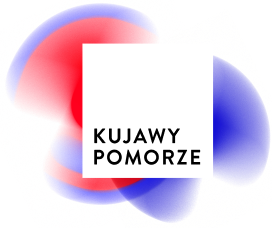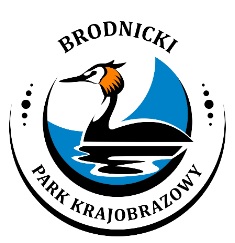Brodnicki Landscape Park
Brodnicki Landscape Park was established in 1985. The aim of the park is to protect the most valuable natural features (landscape, flora, and fauna) as well as material and historical assets of the area, while maintaining a sustainable approach to local development. The current area of the park is 16,935.93 hectares. Over 60% of the park is covered by forests, and water bodies occupy around 10% of its surface. Brodnicki Landscape Park is located across two regions: Kujawsko-Pomorskie (12,457.62 ha) and Warmińsko-Mazurskie (4,478.31 ha). The park occupies the central, most ecologically and culturally valuable part of the Brodnica Lake District.
The landscape of the park is highly diverse, featuring a post-glacial terrain with hilly areas of moraine highlands and flat sandur plains covered with forests. The area is intersected by two chains of glacial troughs with numerous ribbon lakes, connected by two rivers: the Skarlanka and the Brodnica Stream.
Brodnicki Landscape Park contains over 40 lakes, seven of which cover more than 100 hectares. The largest lakes include Wielkie Partęczyny (324 ha), Bachotek (211 ha), Sosno (188 ha), Łąkorz (162 ha).The park’s surface waters are among the cleanest in the region, with most lakes classified as Class II in water purity.
The forests in the park are primarily pine and mixed forests, with smaller areas of deciduous forests such as hornbeam, riparian, and alder forests. A significant portion (37%) of the forests are protective forests, seed stands, and wildlife refuges.
Brodnicki Landscape Park’s flora is rich and diverse, with around 950 species of vascular plants, many of which are protected or relic species. Among the notable species are the lady’s slipper orchid, martagon lily, tufted loosestrife, three species of sundew, bog rosemary, and small cranberry.
The fauna of Brodnicki Landscape Park is also abundant and valuable. Protected and rare species found here include the white-tailed eagle, lesser spotted eagle, black stork, bittern, several species of grebes, crane, as well as the European otter and beaver.
In addition to its natural attractions, the park also features several cultural heritage sites. These include remnants of stilt houses by lakes Łąkorz and Robotno, five medieval hillforts, 12 traditional rural buildings from the 18th and 19th centuries, as well as sacral buildings and manor-palace complexes.
Visitors can explore the beauty of Brodnicki Landscape Park via numerous hiking, cycling, kayaking, and horse-riding trails. The entire area of park is part of the “Green Lungs of Poland”.
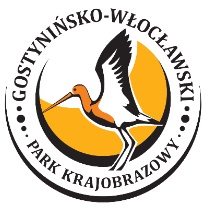
Gostynińsko-Włocławski Landscape Park
The Gostynińsko-Włocławski Landscape Park (GWPK) is an important component of a natural ecological corridor connecting Kampinoski National Park with the Bydgoszcz Forest and further with the Tuchola Forest. The attractiveness of this area is determined by its exceptional landscape and natural values.
The park features a rich variety of morphological forms, including subglacial channels, eskers, and the terraced levels of the Vistula River. From the post-glacial period comes one of the largest inland dune complexes in Poland. The GWPK contains over 40 lakes, including the globally unique Lake Gościąż, known for its characteristic stratification of bottom sediments, which consist of 13,000 pairs of laminae recording 13,000 years of the lake’s history. Lake Rakutowskie, along with its surrounding wetlands, is listed as an internationally important area for birds, particularly waterfowl, known as the “Rakutowskie Bogs.”
Flora and Fauna
Over 60% of the park area is covered by forests, primarily consisting of pine and mixed pine forests. It is estimated that approximately 800 species of vascular plants grow within the Park, around 180 of which are considered regionally rare, and about 50 are protected by law (including clubmoss, Turk’s cap lily, pasqueflower, common foxglove, and broad-leaved orchid).
Among the park fauna, birds are the most valuable group, especially wetland species. Notable species found here, listed in the “Polish Red Book of Animals,” include the black stork, Eurasian bittern, Eurasian curlew, crane, ruff, Montagu’s harrier, hen harrier, redshank, and corncrake.
The park also hosts a Bird Rehabilitation and Breeding Center, where injured birds, mainly birds of prey, are treated and rehabilitated. Thanks to the Center’s work, around 2,000 individuals have been returned to the wild, including short-toed eagles, white-tailed eagles, ospreys, various owl species, harriers, and buzzards.
In 1991, the first reintroduction of the peregrine falcon in Central and Eastern Europe was conducted within the GWPK, an effort that continues today. In 1999, peregrine falcon pairs were observed raising young in nests in Toruń (Elana chimney) and Włocławek (Anwil nitrogen plant chimney).
In 1981, the successful reintroduction of the European beaver also began. Recently, the Eurasian lynx, reintroduced in the Kampinoski National Park, has been observed within the Park area, having reached the GWPK region through the ecological corridor of the Vistula River valley.

Górznieńsko-Lidzbarski Landscape Park
The Górznieńsko-Lidzbarski Landscape Park (GLPK) was established in 1990 and is characterized by large, compact forest areas, many with a “primeval” character. The park’s landscape was largely shaped by Poland’s last glaciation, forming classic post-glacial landforms such as moraines, kames, drumlins, sandurs, and subglacial channels. The terrain features significant elevation differences, with the highest point (Sarnia Góra, 189.8 m above sea level) almost 110 meters above the lowest (Brynica Valley at 80 m). This creates a landscape reminiscent of foothill regions, particularly around Górzno and the Brynica River Valley. The park is also home to 29 picturesque lakes, totaling around 490 hectares.
Approximately 90% of the park is located in the Drwęca River basin, primarily drained by the Brynica River, which flows through the park for 18 km. The river carves a deep and steep gorge, creating a landscape similar to mountain streams, especially in the area protected by the “Jar Brynicy” and “Jar Brynicy II” nature reserves.
Forests and Biodiversity
Forests cover about 70% of the park’s area, including rare forest types such as slope woodlands and thermophilic forests, which provide habitats for numerous rare plant, animal, and fungal species. The park is also home to a rich diversity of mosses and lichens, including the presence of Usnea lichen, an indicator of clean air.
Cultural and Educational Value
The GLPK also boasts cultural heritage, including medieval fortifications, historic churches, and waterworks. Notable historical sites include the Parish Church of the Holy Cross in Górzno and medieval settlements in Górzno, Radoszki, and Księte.
The park offers extensive tourist infrastructure, with over 250 km of hiking and cycling trails. Additionally, environmental education is a key priority, with a network of educational paths and the modern Environmental Education Center established in 2015 in the Ruda forest settlement.
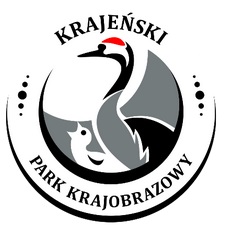
Krajeński Landscape Park
Krajeński Park Krajobrazowy (KPK), established on August 17, 1998, at the initiative of the local community, is the largest landscape park in the Kujawsko-Pomorskie Region and one of the largest in Poland, covering an area of 74,985.60 hectares. It spans parts of three counties–Sępólno Krajeńskie, Tuchola, and Nakło–and includes the municipalities of Sępólno Krajeńskie, Więcbork, Kamień Krajeński, Sośno, Mrocza, and Kęsowo. The park takes its name from the Krajna region, which sits at the intersection of Pomorze and Wielkopolska and is located in the heart of the Krajeńskie Lake District. This location combines various natural, cultural, and landscape elements that contribute to the unique character of the park.
The main goal of the park is to protect and preserve the natural environment, unique landscape features, and the cultural and historical values of the Krajna region for future generations. Despite its agricultural character – 66% of the park’s area consists of farmland–the park is known for its exceptional and unspoiled beauty. It includes hills, tree clusters, and field ponds, which all contribute to a rich and diverse landscape.
Flora
The vegetation of the Krajeński Landscape Park is highly diverse, setting it apart from neighboring areas due to its botanical richness.
Aquatic and Marsh Communities: The most well-preserved natural plant communities in the park include aquatic, marsh, and peat bog areas. Among the wide range of plants, protected aquatic species like the yellow water lily and white water lily stand out, distinguished by their striking colors against the green leaves. Lowland peat bogs are commonly populated by various sedge species, often accompanied by the yellow iris, greater spearwort, and marsh violet. Peat bogs are also home to protected species such as sundews, clubmosses, bog cranberry, and the rare relict species, crowberry.
Meadows: The park’s meadows add significantly to its plant diversity, hosting many interesting flora species. In moist soils near valleys, one can find tall oat-grass meadows, which include a variety of grasses such as meadow foxtail, meadow cranesbill, tall oat-grass, and cocksfoot. Grain fields are adorned with red poppies, purple corn cockles, and blue cornflowers.
Forests and Protected Species: The park is also home to many protected species associated with deciduous forests, including Turk’s cap lily, mezereon, white helleborine, and black cohosh, each adding to the unique floral character of the Krajeński Landscape Park.
Fauna
In the clear lakes of the Krajeński Landscape Park, crayfish can be found. The ichthyofauna is largely represented by common native fish species. Among the fish inhabiting these water bodies are bream, perch, crucian carp, pike, tench, and roach.
While hiking, you may encounter amphibians. The number of amphibians has decreased in recent years, with many species threatened with extinction, such as the fire-bellied toad. Among tailed amphibians, the smooth newt is found in the Krajeński Landscape Park, and occasionally the great crested newt can also be spotted.
Reptiles in the Krajeński Landscape Park include the sand lizard and the viviparous lizard. The forests are also home to the slowworm and the common European adder.
Birds are the most numerous group of vertebrates in the park. Their habitats are highly diverse. Birds adapted to aquatic environments include coots, great crested grebes, mallards, mute swans, little grebes, goldeneyes, and teals. An especially fascinating bird found in the park is the crane, which has become a symbol of the park due to its abundance throughout the Krajeński Landscape Park.
In the forests of Krajna, there are many species of game animals, including deer, fallow deer, roe deer, wild boar, foxes, badgers, raccoon dogs, and martens. In the fields, smaller game animals like hares, partridges, and pheasants can be found. For many species, reproductive success is made possible by the preservation of specific biotopes, which allows them to maintain their gene pool here, even though it is often challenging in other parts of the country.
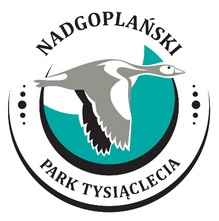
Nadgoplański Millennium Landscape Park (Nadgoplański Park Tysiąclecia)
Nadgoplański Millennium Landscape Park, was established on December 10, 1992, to protect the natural environment, distinctive landscape features, and historical values of this region associated with the beginnings of the Polish State.
The park covers an area of 9,982.71 hectares, of which Lake Gopło occupies 2,154.5 hectares. The lake, along with its surrounding reeds, cattail stands, fields, and small forests, forms the most valuable part of the Park.
Lake Gopło is a ribbon lake approximately 25 km long. Although it is a ribbon lake, it is unusually shallow, with a maximum depth of just 16.6 m and an average depth of 3.6 m. It features an extensive shoreline of about 87.5 km and 11 islands, the largest being Potrzymionek. The lake hosts 25 species of fish, including the European catfish, zander, burbot, weatherfish, and eel.
The lake’s undisturbed shoreline is the Park’s most valuable scenic feature. Boaters on the designated navigation route can appreciate the beauty of this unique natural setting from the water. The extensive stretches of reeds and cattails provide habitats for various wildlife, especially rare and valuable bird species.
Fauna
The Park is home to nearly 200 bird species, 154 of which are nesting species. The greylag goose, the Park’s emblem, is among them. Ducks, pochards, tufted ducks, garganeys, shovelers, and shelducks populate Gopło’s waters, and in winter, the lake attracts mergansers, smews, pintails, and several species of geese, including white-fronted, taiga, tundra, and even barnacle and red-breasted geese.
The Park’s fauna is remarkably diverse, with numerous deer, roe deer, wild boar, and even occasional moose. Along Gopło’s banks, otters can be seen playing, and beavers industriously constructing their dams. The Park also hosts 11 species of amphibians, including the common spadefoot, European tree frog, and fire-bellied toad.
The insect life here is also rich and varied. The area is home to butterflies such as the scarce swallowtail and Alcon blue, as well as the oil beetle, musk beetle, rhinoceros beetle, and many other fascinating insect species.
Flora
In Nadgoplański Millennium Landscape Park, there are 120 plant communities, including 13 forest types and 107 non-forest types. The Park is home to 865 species of vascular plants, 12 of which are rare. Notable plants include the toothed melilot, common centaury, Solomon’s seal, broad-leaved marsh orchid, broad-leaved helleborine, narrow-leaved gentian, and marsh ninebark, among many other rare and interesting species.
The landscape park not only preserves nature but also protects the cultural and historical heritage of the region, which reflects the area’s rich and storied past.
Kruszwica is considered a legendary Polish capital and is thought to be one of the places where Polish statehood began. The earliest evidence of settlement in present-day Kruszwica dates to the Neolithic, around 3900-1800 BCE. Around 500 BCE, a fortified settlement was established on Rzępowski Isle (now the Rzępowski Peninsula). Kruszwica’s development benefited from fertile black soils that promoted agricultural growth and its location along the “Amber Road.” Between 1350 and 1355, King Casimir the Great ordered the construction of a castle in Kruszwica, which became the seat of the Kruszwica Castellany and starosty. Unfortunately, after two years of Swedish occupation, the castle was blown up in 1657, leaving only the tower, now known as the “Mouse Tower,” which is a popular tourist attraction.
Of course, the Park features numerous cycling trails and educational paths with viewpoints for tourists, including:
- the “Mare Polonorum” educational trail;
● the “Gopło” historical and natural trail;
● the “Potrzymiech” educational trail.
The Park area can be explored independently or in organized groups, on foot, by bike, or even by kayak. Regardless of the chosen form, it’s worth visiting this remarkable area. Additionally, the Nadgoplański Millennium Park organizes a variety of outdoor events and bike rallies. Current information and upcoming events can be found on the Park’s Facebook page.
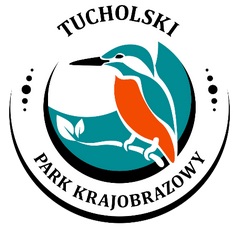
Tucholski Landscape Park
The natural surroundings, clean air, excellent conditions for active recreation, and valuable sightseeing features create an ideal environment for relaxation. That is why the vast forests crossed by the fast-flowing Brda River, idyllic landscapes, and picturesque Borowiackie villages have been attracting tourists to the Tuchola Forest region for years.
About the Park
The rare and protected species of plants, animals, and fungi, as well as historical remnants of ancient culture, contributed to the establishment of the Tucholski Landscape Park (TPK) in 1985.
The park is home to eight nature reserves: Ustronie, Bagno Grzybna, Lake Zdręczno, Cisy nad Czerską Strugą, Kozie Lakes, Sources of the Stążka River, Brda River Valley, and Bogs by the Stążka. Nearly 150 objects have been designated as natural monuments. The culmination of efforts to protect the Tuchola Forest’s nature was the recognition of this area in 2010 as the Tuchola Forest Biosphere Reserve, which was included in the UNESCO Man and the Biosphere (MaB) global network. The TPK is responsible for coordinating activities in the buffer zone of the reserve.
The Tuchola Landscape Park, together with its buffer zone, covers the territories of seven municipalities in the Kujawsko-Pomorskie Region (Tuchola, Śliwice, Cekcyn, Lubiewo, Gostycyn) and the Pomorskie Region (Chojnice, Czersk), with a total area of nearly 53,000 hectares. Forests make up nearly 90% of the area.
Main Attractions
The entire area of Tuchola Landscape Park is abundant in interesting sites and tourist attractions. A must-see is the largest aqueduct in Poland, located in Fojutowo. This structure allows the crossing of two waterways: the Great Brda Canal and the natural stream of Czerska Struga. The aqueduct is modeled on Roman constructions and was built in the 19th century as part of an irrigation system for the poor Czerskie meadows called Rezlonki.
Another well-known and picturesque attraction, especially among kayakers, is the “Piekło” scenic spot, located in the Brda River Valley nature reserve near the Świt Forestry Lodge. Here, visitors can enjoy the beauty of the river with its rapids flowing among boulders and high embankments, a landscape typical of mountain rivers. In the area, one may spot the kingfisher, known as the gem of the Tuchola Forest, which is also the symbol of the Tuchola Landscape Park.
Tourists interested in traveling back in time and visiting a Borowiacka settlement from over 100 years ago should visit the village of Krąg, distinguished by its regional wooden buildings from the turn of the 19th and 20th centuries. It serves as a sort of living museum.
A characteristic feature of the Tuchola Forest landscape is its peat bogs. The Kozie Lakes Nature Reserve protects vegetation typical of high peat bogs, which has formed “floating islands.” The Bogs by Stążka Nature Reserve protects unique peat bogs around the purest river in the Tuchola Forest, the Stążka River. An attractive nature and educational trail called “Jelenia Wyspa” has been created here, with bridges, an observation tower, and signs describing typical Borowiacka landscape elements.
Tourism
The most popular way to explore the park is on foot, with hiking recently evolving into Nordic walking. There are also several cycling routes. However, the Tuchola Forest is primarily a paradise for kayakers. The Brda River is considered one of the most interesting kayaking routes in Europe. The park is home to bike and kayak rental shops.
The accommodation facilities in the Tuchola Landscape Park are well-developed. There are resorts where large groups can stay. Individual tourists can find accommodation in inns, guesthouses, rooms for rent, or in the welcoming homes of agritourism farms. Along the lakes and rivers of the park, there are designated campsites for tourists. They are located in the following towns: Rytel, Ostrowite, Okoniny Nadjeziorne, Brda, Woziwoda, Raciąż, Gołąbek, Rudzki Most, Świt, Piła-Młyn, Bysław, and Cekcyn.
After a day of kayaking or hiking, visitors can enjoy local dishes with forest mushrooms served at nearby bars and restaurants. Regional potato cakes called “szandar,” dumplings with sauerkraut, and “mace borowiackie” will surely convince you to try Borowiacka cuisine.
Fishing enthusiasts can fish in the waters of the park after purchasing a permit. The exception is the waters in nature reserve areas, where fishing is not allowed, except in the Brda River Valley Reserve, where fishing is allowed, but special regulations apply.
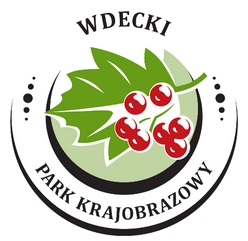
Wdecki Landscape Park
Wdecki Landscape Park: Information about the Park
The eastern part of the Tuchola Forests, especially the areas along the middle course of the Wda River, has long captivated visitors with its unique landscape. Due to its natural, historical, and cultural values, as well as its landscape qualities, the Wdecki Landscape Park was established on February 16, 1993, to preserve these values in conditions of sustainable development and to promote them.
The park, along with its buffer zone, covers an area of 23,786.39 hectares, of which 4,609.15 hectares constitute the buffer zone.
Flora
Forests cover about 60% of the area of the Wdecki Landscape Park. The vast majority of these forests are young coniferous forests, dominated by Scots pine. The current composition of these forests is largely the result of human activity, which has led to the conversion of the original old-growth forests into coniferous forests. The largest areas of forest are occupied by different types of coniferous forest, with a variety of habitats and species compositions.
The Wdecki Landscape Park is also home to many other interesting species of plants. Relics of postglacial flora, such as bilberry, bog tea and bearberry, are widespread throughout Tuchola Forest. The undergrowth of the forest contains unique, protected plant species such as Mezereon and Turk’s Cap Lily.
Of particular note are the spring peat bogs and the valuable lichens that serve as indicators of the purity of the air, such as the lung lichen.
Fauna
The diversity of conditions in the Wdecki Landscape Park creates a favourable environment for rare species of animals, some of which are rare even on a national scale. Fish species such as brown trout, grayling, catfish, pike and large lake trout can be found among the rich fauna.
The park is home to 13 species of amphibians, including the great crested newt, the common spadefoot, the fire-bellied toad, the European tree frog and 5 protected species of reptiles: the slow worm, the sand lizard, the viviparous lizard, the grass snake and the European adder.
The wetland areas in the park provide an excellent habitat for bird life. Of the 149 bird species, 113 are protected, including the black stork, goldeneye, white-tailed eagle, spotted crake, dunlin, red kite, kingfisher, marsh harrier, sparrowhawk and merganser.
Of the 42 mammal species, 16 are protected. These include the European beaver, the otter, the common shrew, the common noctule, the greater noctule and the brown long-eared bat. Environmental changes have led to the extinction of some species and many others are still under threat.
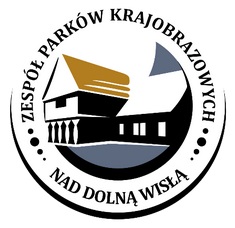
The Association of Landscape Parks „Lower Vistula Valley”
This is a geographical region encompassing the valley of the Vistula River from Bydgoszcz to the mouth of the Nogat River near Gniew. The valley stretches over a distance of 120 km, with a varied width ranging from 5 to 6 km along its length. In some places, there are several-kilometer-wide extensions known as basins, such as the Unisław Basin, Świecko-Chełmiński Basin, or Grudziądz Basin. Elsewhere, the edges of the valley meet directly with the riverbed, creating picturesque steep cliffs. The Lower Vistula Valley was shaped about 17,000 to 16,000 years ago during the retreat of the last Scandinavian ice sheet.
This area is an important ecological corridor of European significance, connecting the Baltic Sea with the Carpathians. It serves as an ancient migration route for birds, mammals, invertebrates, and plants that spread along the valley and settle in new areas.
Flora
The Lower Vistula Valley, which cuts through the highland lakes, is known for its unique plant communities. Studies have shown that the vascular plant flora (flowering plants and ferns) in the Lower Vistula Valley Landscape Parks is more diverse than in the surrounding areas. It comprises about 1,000 species.
Within this group of parks, 67 plant species are fully protected and 14 are partially protected. Common species include nitrogen-loving plants such as goosefoot, knotweed and orchard grass, which thrive on the flat river-alluvial valley floors. The sand islands that emerge in summer are home to rare plants such as maple-leaved goosefoot, Ukrainian dock, Brittinger’s knotweed, water lily and tufted marsh grass, recently introduced from the Dnieper Basin.
The river bed itself has limited vegetation, while the oxbow lakes are rich in aquatic and marsh plants, including water lilies , yellow water lilies, pondweeds and floating fern.
Forests cover a relatively small and unevenly distributed area, mainly on uplands and river terraces (pine forests) and along the Vistula Valley slopes (oak-hornbeam and mixed forests).
Fauna
The fauna of amphibians, reptiles and mammals in „Lower Vistula Valley” the Landscape Parks is still insufficiently studied, although it is assumed that all species typical of the Polish lowlands are present. There is a lack of data concerning the number of species, habitats used, population trends and ranges. Only a few studies on the Lower Vistula have focused on fish. Surveys conducted from the Włocławek Dam to the mouth of the Vistula identified four protected fish species. Although information on bird populations is still limited, birds are the best-studied group of animals in the park.
In the winter, the Vistula River becomes an attractive wintering area, rich in food sources and shelter for a large number of bird species. During this season, thousands of ducks concentrate along the river, making it one of the most important wintering areas in Poland for species such as the Common Goldeneye, the Mallard and the Common Merganser.

